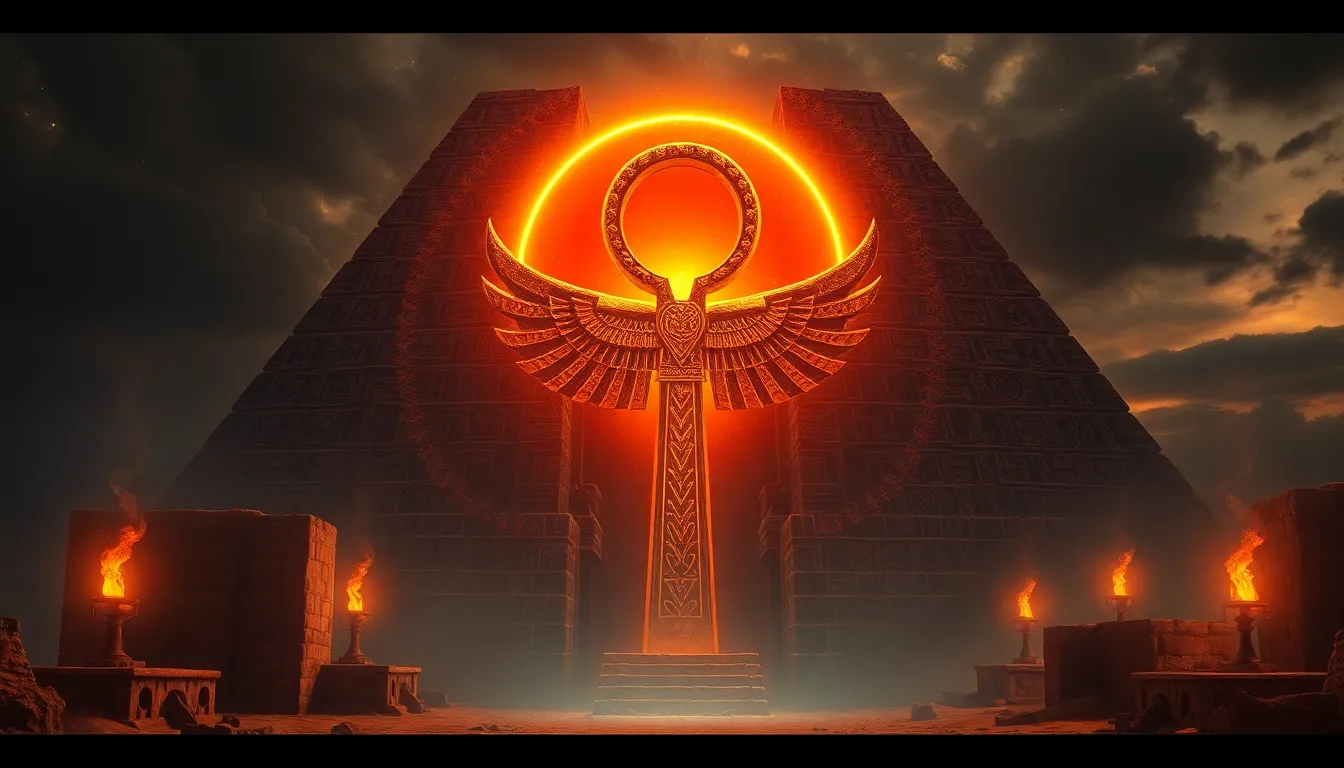The Geography of the Sacred Ankh: Myths of Life
I. Introduction
The ankh, often referred to as the “key of life,” is one of the most recognizable symbols of ancient Egypt. It resembles a cross with a loop at the top and has captivated scholars, historians, and enthusiasts alike for centuries.
In ancient Egyptian culture, the ankh was imbued with profound significance, embodying the concepts of life, immortality, and the divine. It was a crucial element in religious practices and daily life, representing not only the physical existence but also the spiritual journey after death.
This article aims to explore the geography and myths associated with the ankh, delving into its historical context, its role in mythology, and its lasting impact on both ancient and modern cultures.
II. Historical Context of the Ankh
The origins of the ankh can be traced back to ancient Egypt, where it emerged as a potent symbol during the early dynastic period. It is believed to have been derived from the hieroglyphic symbol for life, often used in inscriptions and temple art.
In Egyptian religion, the ankh played a vital role in various rituals and beliefs. It was often depicted in the hands of gods and pharaohs, signifying their divine authority and connection to the afterlife. The ankh served as a powerful talisman, believed to grant the bearer protection and eternal life.
As a symbol of life and immortality, the ankh represented the essence of existence, resonating deeply with the Egyptian belief in the afterlife and the importance of honoring the deceased.
III. The Ankh in Egyptian Mythology
Within Egyptian mythology, the ankh is often portrayed as a key to the afterlife. It is frequently associated with deities, particularly Osiris, the god of the afterlife, and his wife, Isis, who is revered for her magical and nurturing qualities.
- Osiris: Often depicted holding an ankh, symbolizing his role as the ruler of the underworld and the giver of life.
- Isis: Associated with the protection of the deceased, she is often shown offering the ankh to those who seek resurrection.
Numerous myths surround the themes of resurrection and eternal life, emphasizing the ankh’s role in ensuring a safe passage to the afterlife. The story of Osiris’s resurrection by Isis, for example, underscores the ankh’s significance in the cycle of life and death.
IV. Geographic Significance of the Ankh
Several key locations in ancient Egypt are deeply intertwined with the symbolism of the ankh. The Nile River, the lifeblood of Egypt, has a profound influence on the ankh’s meaning, representing fertility, sustenance, and the cyclical nature of life.
- The Nile Delta: Considered the ‘gift of the Nile,’ this region was vital for agriculture and was often depicted in connection with life-giving themes.
- The Valley of the Kings: Burial sites of pharaohs where the ankh was frequently found among funerary artifacts.
- Temples of Karnak and Luxor: Major religious sites showcasing numerous depictions of the ankh in art and architecture.
Archaeological findings, including amulets and inscriptions, highlight the ankh’s geographical relevance and its connection to the natural world, reinforcing its status as a symbol of life.
V. The Ankh in Art and Architecture
The ankh is prominently featured in ancient Egyptian art, appearing in paintings, carvings, and sculptures. It was often depicted in the hands of gods, pharaohs, and other important figures, symbolizing their divine right to rule and their connection to the afterlife.
Architecturally, the ankh can be found in various structures, including:
- Temples: The ankh was often sculpted into temple walls and entrance columns, inviting the divine presence.
- Tombs: Many tombs featured the ankh as a protective symbol for the deceased on their journey to the afterlife.
These representations not only enhance the aesthetic value of the pieces but also serve as a reminder of the spiritual significance of the ankh in ancient Egyptian society.
VI. The Ankh in Modern Culture
In contemporary times, the ankh has experienced a revival in various forms of spirituality and art. It continues to symbolize life, health, and immortality, resonating with many seeking deeper meanings in their lives.
- Spirituality: The ankh is often embraced by practitioners of modern spiritual movements, symbolizing the connection between the physical and spiritual worlds.
- Art and Fashion: The ankh has found its way into jewelry, tattoos, and fashion, often used as a statement piece reflecting personal beliefs.
Additionally, its influence can be seen in popular culture, appearing in films, literature, and music, where it is often associated with themes of life and rebirth.
VII. Comparative Symbolism: The Ankh and Other Cultures
The ankh is not the only symbol representing life and immortality across cultures. Several other ancient civilizations have developed similar symbols, such as:
- The Cross: In Christianity, the cross symbolizes eternal life through faith and resurrection.
- The Tree of Life: Present in various cultures, this symbol embodies the interconnectedness of all life and the cycle of birth and rebirth.
Each of these symbols shares a common theme of life and the afterlife, yet the ankh stands out due to its unique design and the specific cultural context of ancient Egypt.
VIII. Conclusion
In summary, the ankh holds a profound significance in both ancient Egyptian culture and mythology, representing life, immortality, and the divine connection between the physical and spiritual realms. Its geographical roots, intertwined with the Nile and key sacred sites, further enhance its importance.
The enduring legacy of the ankh continues to inspire modern interpretations, bridging the gap between ancient beliefs and contemporary spirituality. As we reflect on the ankh’s rich history and symbolism, we are encouraged to explore further the myriad of ancient symbols and their meanings across cultures.




